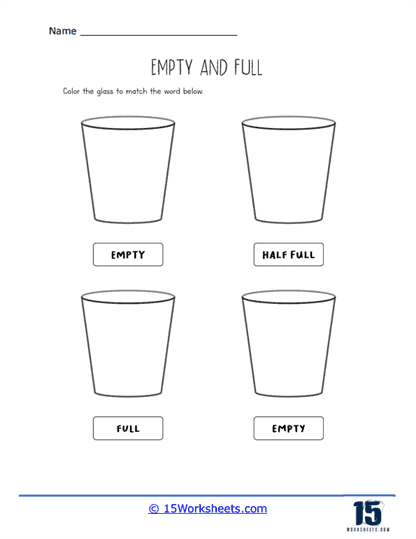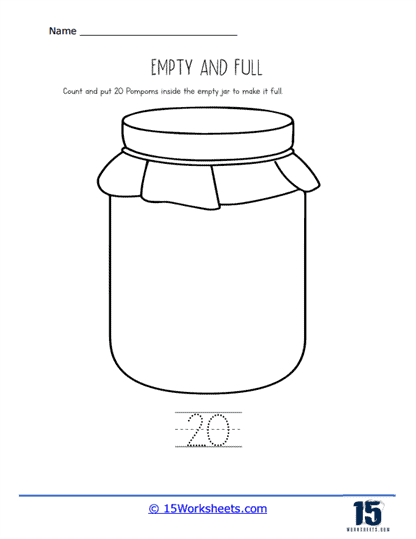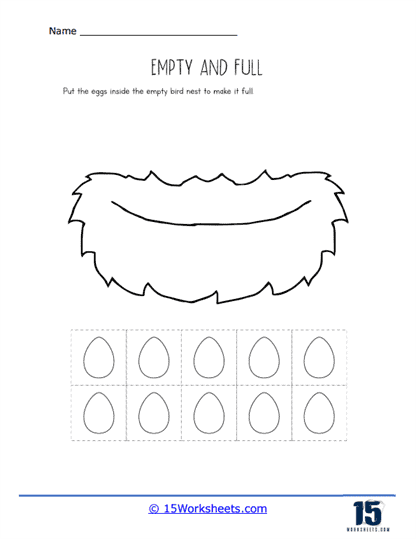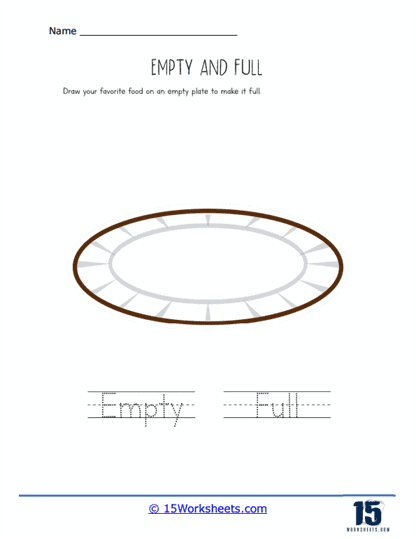Empty vs. Full Worksheets
What are Empty vs. Full Worksheets?
The of this set of worksheets is to help children develop their understanding of capacity and volume. You will find a wide variety of activities and exercises that ask children to identify and compare objects based on whether they are empty or full.
The empty vs. full worksheets come in many different forms, such as fill-in-the-blank exercises, matching games, and puzzles. Some worksheets might ask children to identify containers that are empty or full, while others might ask them to fill containers to a certain level or pour liquids from one container to another. They also include visuals and illustrations to make the learning process more engaging and enjoyable for young children.
The goal here is to help children build their understanding of capacity and gain confidence in their ability to compare and contrast different objects based on their volume.
Teaching the math concept of empty vs. full can be done using various methods. Here are some strategies you can use:
Real Objects – Use real objects such as cups, bowls, or jars of different sizes and ask children to identify whether they are empty or full. Encourage them to use words like “empty,” “almost empty,” “full,” or “overflowing.”
Visual Aids – Use pictures or illustrations that show examples of empty and full containers. This helps children understand the concept of capacity and volume.
Pouring Activities – Provide children with containers and liquids of different volumes and ask them to pour them into other containers. This activity helps them understand the concept of capacity and volume.
Sorting Activities – Provide children with a variety of objects and ask them to sort them into groups based on whether they are empty or full. This activity helps them understand the concept of classification.
Songs and Rhymes – Use catchy songs and rhymes that emphasize the concept of empty and full. This makes learning fun and engaging for children.















